Floor Insulation - Part 1
by Mark Row
Protecting your home with floor insulation
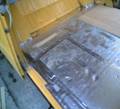 Floor insulation can help you keep your feet warm during cold winter months, but also affect and increase the overall thermal performance of your home, especially when combined with proper insulation of the rest of your interior, including roof, basement, loft or wall insulation. Basically, the insulation method and products you decide to use will depend on your floor type, that is the material it is made of and its construction and position. Of course, certain precautions and measures should be taken prior to installing your floor insulation, which will again be determined by your floor type and the insulating material. These are important, since without considering some significant issues before insulating can reduce the performance of your insulation product later on. We herewith offer some useful advice on protecting your home with floor insulation.
Floor insulation can help you keep your feet warm during cold winter months, but also affect and increase the overall thermal performance of your home, especially when combined with proper insulation of the rest of your interior, including roof, basement, loft or wall insulation. Basically, the insulation method and products you decide to use will depend on your floor type, that is the material it is made of and its construction and position. Of course, certain precautions and measures should be taken prior to installing your floor insulation, which will again be determined by your floor type and the insulating material. These are important, since without considering some significant issues before insulating can reduce the performance of your insulation product later on. We herewith offer some useful advice on protecting your home with floor insulation.
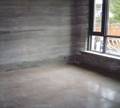
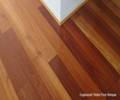
The first thing you need to know is the basic difference between two types of floors, which will, as mentioned before, further on determine the type of insulation you need. The two main floor types are solid ground floors and suspended timber floors, where the basic criteria is, as you can see, the material they are made of. Solid ground floors are usually made of concrete, placed directly on the ground or supported by concrete beams, while suspended timber floors are consisted of timber joists, which support timber floorboards grooved and tongued or just butted together. Before carrying on with the insulation process, you need to determine which kind of floor you have.You can do this easily if there is a basement below the floor: simply go down and take a look, where, for example, timber joists or air bricks on the outer wall, will indicate a suspended timber floor. On the other hand, just lift a corner of your underlay or carpet and take a look at your floor.
You also need to understand all the benefits from floor insulation, that is just how significant properly insulating your floor actually is. First of all, insulation makes your floor stronger and able to bear heavier load and thus much more durable and lasting, it also leads to significant moisture reduction, since it keeps your carpet protected from mildew and mold and can also have significant impact on your health, due to the fact that it prevents dust and germs being transmitted through air circulation and keeps pollen and other allergens outside. Now, let’s get on with basics on solid ground and suspended timber floor insulation.
Solid ground floor insulation
Primarily floors were made of materials such as clay, gravel, earth or chalk, as available compound materials. Later on, some other solid materials appeared, like stone flags, mortar, bricks, mixture of stone, marble and stucco and finally, gypsum and concrete, which became the traditionally used construction material in modern buildings.
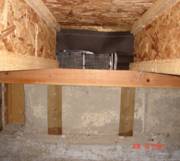 Before adding floor insulation to your solid ground, that is concrete floor, some steps and issues should be previously addressed, in order of choosing the most adequate insulation method and material. The first thing you need to do is take into account the construction and the material of your floor, especially if you are insulating an older building, where some significant alterations could be done over time. Another important thing is the dampness problem, caused by either moisture movement from the sub-soil or condensation, which occurs due to significant temperature differences between air and the floor. These issues need to be resolved by allowing the building to “breathe”, before insulating, in order of preventing potential risks for both building and the people living there. Further on, take into account calculating the heat loss and thermal mass. Bear in mind that the ground itself has relatively stabile and constant temperature and that the heat loss is greater near external walls than in the floor centre. When it comes to thermal mass which presents a measure of capacity to store heat, solid ground floors have high thermal capacity, which must be taken into account when insulating, since you do not want to reduce the floors thermal mass with improper insulation.
Before adding floor insulation to your solid ground, that is concrete floor, some steps and issues should be previously addressed, in order of choosing the most adequate insulation method and material. The first thing you need to do is take into account the construction and the material of your floor, especially if you are insulating an older building, where some significant alterations could be done over time. Another important thing is the dampness problem, caused by either moisture movement from the sub-soil or condensation, which occurs due to significant temperature differences between air and the floor. These issues need to be resolved by allowing the building to “breathe”, before insulating, in order of preventing potential risks for both building and the people living there. Further on, take into account calculating the heat loss and thermal mass. Bear in mind that the ground itself has relatively stabile and constant temperature and that the heat loss is greater near external walls than in the floor centre. When it comes to thermal mass which presents a measure of capacity to store heat, solid ground floors have high thermal capacity, which must be taken into account when insulating, since you do not want to reduce the floors thermal mass with improper insulation.
Finally, installing floor insulation may include some preparation, that is previous tasks that need to be performed, such as reparation or lifting and replacement of the existing floor, which should be dealt with great care, in order of avoiding potential damage to the construction and stability of the building. Also, if you decide to use some under-floor heating system, which could be a good solution when there is a need for floor replacement, know that under-floor heating will make a significant temperature difference between the floor and the ground below it, causing greater potential heat loss, so this heating systems should be combined with some insulating layer below the floor.
When it comes to floor insulation materials, certain things must be considered, especially in modern concrete floors which must have considerable strength, whether placed below the concrete slab or below the screed. Also, applicable regulations must be consulted, since according to the Building Regulation, Part L, the prescribed U-value in floor insulation must reach 0.25 W/m2K. Insulating materials that could be used in solid floor insulation are expanded and extruded polystyrene boards or rigid urethane and phenolic boards, usually with aluminum foil, all available right here at Insulation Shop, made to meat all your thermal and acoustic requirements and manufactured by some leading brands today like Celotex, Kingspan, Recticel, Xtratherm, Cellesta, Cordec, Kay-Metzeler or Jablite.
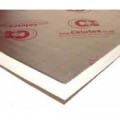
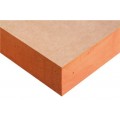
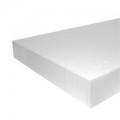
Celotex PIR Insulation Board Kingspan Floorboard Jablite Polystyrene Insulation Board
Review fallow-up: Suspended Timber Floor Insulation - Floor Insulation Part 2
Feel free to share your opinion and expirience regarding floor insulation in the comments section below. I will be happy to answer all your questions.






















































































































